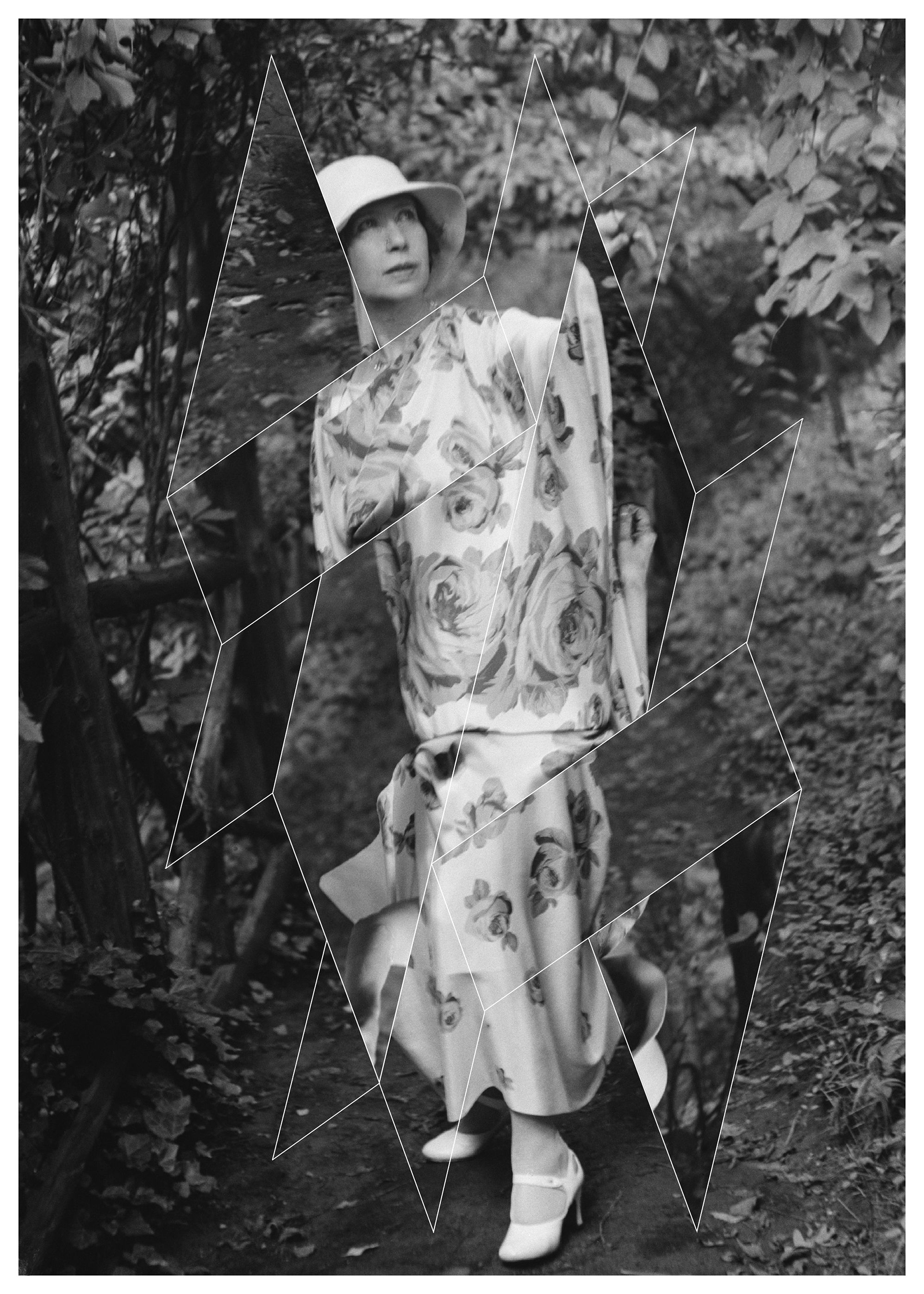
Florine Stettheimer (1871–1944) was a member of a wealthy and influential assimilated Jewish family who frequently moved between Europe and America. Florine Stettheimer began her formal art training in 1892 at the Art Students League of New York. Her early work reflects academic training tempered by a bright palette and pronounced brushstrokes that attest to her exposure to post- Impressionism during her family’s travels in Europe. Florine Stettheimer maintained the stance of the detached observer, recording events for the private pleasure of friends and family. She seldom showed her work, and never sold it. In 1934 she designed the sets and costumes for Gertrude Stein’s avant-garde opera Four Saints in Three Acts. Her best-known works are four paintings celebrating modern life in New York with wit and irony: Cathedrals of Broadway (1929), Cathedrals of Fifth Avenue (1931), Cathedrals of Wall Street (1939), and Cathedrals of Art (1942), all owned by the Metropolitan Museum of Art. In her poems and in her paintings, Stettheimer described a world in which people define themselves by the things that surround them, rather than by their internal values or beliefs.
The Stettheimer family often hosted invite only parties at their rented Hudson River summerhouse. They would entertain guests from New York’s avant-garde, such as Carl Van Vechten, Marcel Duchamp, Leo and Gertrude Stein, Baron Adolphe de Meyer, Avery Hopwood, Marquis de Buenavista, Rockwell Kent, among others. By 1916, the Stettheimer sisters had an established salon in New York. They became regular affairs in their Upper West Side brownstone on West 76th street, and later in midtown’s Alwyn Court on West 58th street. Their salons were semi-public events in a private residence where artists and intelligentsia from all social classes would gather.
Each sister had a specific role, or attitude, at the salons. Florine Stettheimer, the Jazz Age saloniste was disconnected and aloof at the gatherings, but not antisocial. She has been described as “a dispassionate flaneur,” possibly because she was closely observing the salon-goers to later paint them. Salons were meant to be an egalitarian space where social hierarchies, class, wealth, gender, and sexuality were “flattened-out,” which fostered a collective creativity in material and immaterial labor. The guests included a mixture of gay, lesbian, and bisexual members that she painted with affection, openness, and humor. Her paintings were influenced by her role in the salons, and the conversations about criticism and theory that occured. Soiree or Studio Party from 1917-19 is a good example of a Stettheimer Salon painting including artists, playwrights, collectors, poets, and gallerists arranged around the room like a theatrical set.
SOURCES
http://matthewjeffreyabrams.com/wp-content/uploads/2017/09/Abrams-Stettheimer-Salon.pdf
https://www.nytimes.com/2017/05/18/arts/design/a-case-for-the-greatness-of-florine-stettheimer.html?_r=0
https://hyperallergic.com/329408/florine-stettheimer-feminist-provocateur/
http://www.andreageyer.info/revolttheysaid/s.html
http://matthewjeffreyabrams.com/wp-content/uploads/2017/09/Abrams-Stettheimer-Salon.pdf
https://www.nytimes.com/2017/05/18/arts/design/a-case-for-the-greatness-of-florine-stettheimer.html?_r=0
https://hyperallergic.com/329408/florine-stettheimer-feminist-provocateur/